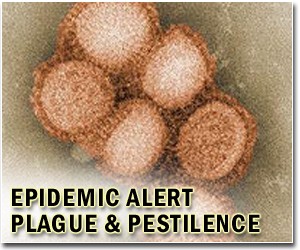|
. |
 AIDS: HIV drugs boost prevention hopes
AIDS: HIV drugs boost prevention hopes
by Staff Writers
Paris July 13, 2011

|
Heterosexuals who take daily AIDS drugs reduce the risk of being infected by the human immunodeficiency virus (HIV) by nearly two-thirds, ground-breaking studies said on Wednesday.
Campaigners hailed what they described as a powerful new weapon in the three-decade war against AIDS.
"This is a major scientific breakthrough which reconfirms the essential role that antiretroviral medicine has to play in the AIDS response," Michel Sidibe, executive director of the UN agency UNAIDS said.
"These studies could help us to reach the tipping point in the HIV epidemic."
A trial called Partners PrEP, conducted by the University of Washington, followed 4,758 "sero-discordant" heterosexual couples -- in which one person had HIV and the other was uninfected -- in Kenya and Uganda.
The uninfected partner received either a dummy pill or a tablet containing either the HIV drug tenofovir or a combination of tenofovir and emtricitabine.
In the group receiving tenofovir, there were 62 percent fewer infections compared with the placebo group.
In the tenofovir/emtricitabine group, there were 73 percent fewer infections over counterparts taking the placebo.
The results were so remarkable that safety monitors recommended the probe be stopped early, for to continue it would have been unethical.
The second trial, conducted by the US Centers for Disease Control and Prevention (CDC), followed 1,219 uninfected men and women in Botswana who received either placebo or the tenofovir/emtricitabine combination.
Those who received the antiretroviral pill reduced the risk of HIV infection by 63 percent compared with the placebo group.
They are the first trials to show that so-called pre-exposure prophylaxis, or PrEP, can work among heterosexuals.
Last November a study, conducted among sero-discordant homosexual men, found a reduction of 44 percent in risk among uninfected partners who took HIV drugs.
In contrast, a smaller-scale trial, whose preliminary results were published earlier this year, found that PrEP did not protect heterosexual women.
In May, a big study conducted among sero-discordant heterosexual couples in Africa showed early use of drugs by the infected partner slashed the risk of transmitting HIV to the other partner by 96 percent.
Put together, these trials add massively to the argument that the world's AIDS pandemic can be slowed by wider distribution of antiretrovirals, said activists.
"These results are tremendously exciting and confirm that we are at pivotal period," said Mitchell Warren, executive director of US advocacy group AVAC.
"Now is the time to include ARV-based prevention in national plans, applications to the Global Fund to Fight AIDS, Tuberculosis and Malaria and donor priorities.
"(...) We need ambitious pilot and demonstration projects to guide programmatic design, along with national and international guidance on how best to use ARVs (antiretrovirals) as lifesaving prevention tools," he said.
The International AIDS Society, which is hosting a major conference in Rome from Sunday, said data from the two trials was "compelling" and "adds to the cascade of evidence."
But it also highlighted the looming debate about using drugs designed for treatment in the role of prevention.
Antiretrovirals are the famous "cocktail" of drugs, first introduced in 1996, that helped turn the tide against AIDS.
They suppress HIV in the body but do not eradicate it completely.
As a result, they reduce the risk of infection through contact with body fluids, although they are not a cure and taking them can carry inflict toxic side effects.
In addition, there is a potentially hefty financial cost if the pills are taken daily for prevention, although the price has fallen to as little as 25 US cents per tablet.
The "treatment as prevention" strategy has risen alongside male circumcision as new options in the global HIV/AIDS pandemic, which has claimed around 30 million lives over the past three decades.
More than 33 million people are living with the AIDS virus, according to estimates for 2009 released last year by UNAIDS.
|
. |
|
